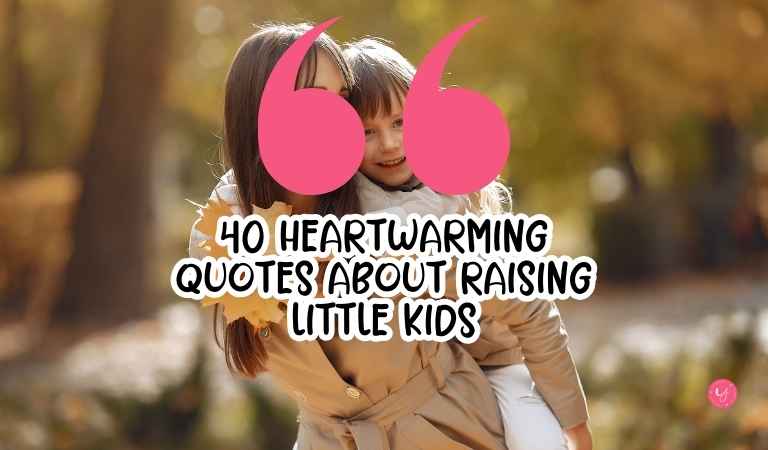10 Simple Ways to Teach Empathy to Young Children

“Treat others the way you want to be treated.”
This simple phrase captures the heart of empathy.
Empathy is about understanding and sharing the feelings of others. It is about truly putting yourself in someone else’s place and imagining their experience.
In children, empathy is the foundation for building strong friendships, resolving conflicts, and growing into kind, compassionate individuals. It’s also a skill, and like any skill, it can be taught and nurtured with care.
As a mom of two girls, I’ve learned that teaching empathy doesn’t have to be complicated. It’s about the little moments that add up over time.
To help you through the process, let us talk about 10 simple ways to help your child develop this essential life skill.
Why Do Kids Need to Have Empathy?
Empathy isn’t just about being kind (though that is a wonderful part of it).
It is a life skill that shapes how kids interact with the world around them.
Here are a few reasons why empathy is crucial for children.
- Stronger Relationships: Empathy helps kids form meaningful friendships and connect with peers.
- Reduced Bullying: Understanding others’ feelings can discourage hurtful behaviors and promote kindness.
- Better Conflict Resolution: Kids who practice empathy are better at resolving disagreements calmly.
- Emotional Intelligence: Empathy strengthens self-awareness and emotional regulation.
- A Kinder World: Empathetic kids grow into adults who make positive contributions to their communities.
In a world that often feels disconnected, it is important to teach children to value and care for others is a gift that benefits everyone.

10 Simple Ways to Teach Empathy to Young Children
Now let us get to the heart of the topic, how you can make empathy a natural part of your child’s life.
These are a few steps that I have been proven effective and shared by few moms who tried it and some parenting experts.
1. Acknowledge and Validate Their Feelings
Empathy starts at home. Children first learn it when their own feelings are acknowledged.
When you take the time to name and validate their emotions, it teaches them to recognize and respect the feelings of others.
If your child falls and scrapes their knee. Instead of saying, “You’re fine,” try, “That must have hurt. Do you need a hug?” or “I see you’re upset. Let’s clean it up together.”
Whenever your child is upset about something that seems minor to you, a lost crayon or a missed turn in a game, acknowledge their frustration instead of dismissing it.
Saying, “I see this is hard for you” shows them that their emotions matter and are worth addressing.
2. Be a Role Model
Kids watch everything we do. Yes, even when we’re sneaking chocolate!
When they see you practicing empathy like being kind to others, listening attentively, or offering support, they’ll naturally imitate these behaviors.
They learn empathy by seeing us practice it.
For instance, holding the door for someone or showing patience when someone makes a mistake sets a powerful example.
You can even narrate your actions, like saying, “I helped the neighbor with her bags because she looked tired”. It helps them connect your behavior to the concept of empathy.
3. Read Stories That Spark Conversations
Books are a window into other people’s experiences. Thus a great way to teach empathy.
Through stories, kids experience emotions and situations outside their own lives.
When they read about characters navigating emotions helps children understand different perspectives.
Pick books like “The Invisible Boy” or “The Rabbit Listened.”
After finishing a story, ask questions like, “How do you think they felt when that happened?” or “What would you have done in their place?”
These discussions bring the story’s lessons into real life. They help children think deeply about emotions and reactions.
4. Use “What If?” Scenarios
Turn ordinary moments into opportunities for reflection by asking “What if?” questions to your child.
Asking your child to think about how someone else might feel is a simple yet powerful way to foster empathy
During everyday situations, ask open-ended questions that start with “What if.”
For example, if you see someone drop their toy at the park, you might ask, “What if that was your favorite toy? How would you feel?”
These questions encourage your child to think about others’ perspectives in a playful, natural way.
5. Encourage Sharing and Turn-Taking
Young kids can find sharing or taking turns hard, but it’s an essential part of empathy. It is a foundational lesson in understanding fairness and considering others’ needs.
Before you even try to teach your kids about sharing, it’s important to understand that younger children are not yet developmentally equipped to fully grasp the concept.
For toddlers and younger preschoolers, the idea of “this is mine” is a natural stage of their growth. They’re learning ownership and control, which are vital for building their sense of self.
Instead of forcing sharing, focus on modeling and encouraging the behavior in ways that align with their developmental stage.
For example, if your child is playing with a toy and another child wants it, you can say, “When you’re done, it will be her turn. Let’s let them know when you’re ready to share.” This teaches them to respect their own boundaries while also considering others.
As children grow older, games that require turn-taking become an excellent way to reinforce fairness and patience.
Board games, puzzles, or even simple role-switching activities like taking turns being the “leader” during a walk, help kids practice waiting their turn in a fun, non-pressured way.
When they do share or take turns, always praise the effort.
Saying something like, “It was so kind of you to let your sister play with your blocks. Did you see how happy it made her?” connects the action to the positive outcome, reinforcing the idea that their kindness has a meaningful impact on others.
Over time, these small moments of encouragement and practice will help your child see sharing and turn-taking not as a loss of control, but as a way to build connection and joy with others.
6. Pretend Play Activities
Kids love pretending. It gives them the opportunity for them to step into someone else’s shoes. So, it’s a fantastic way to practice empathy.
When they act as a doctor treating a “sick” doll or a teacher helping imaginary students, they’re practicing seeing the world from another perspective.
Set up a pretend doctor’s office and guide them by askisg, “How can you make your patient feel better?”
Let them play “parent” to their doll and ask them, “Your baby is crying—what do you think they need?”
This not only makes empathy fun but also connects it to problem-solving.
7. Talk About Real-Life Situations
Life is full of teachable moments if we’re paying attention.
When your child notices someone upset at the park or sees a friend feeling left out, use it as a teachable moment. Ask, “Why do you think they’re sad?” or “What could we do to help them feel better?”
These conversations help children connect their own experiences to those of others, building emotional awareness and compassion.
8. Praise Empathy When You See It
When your child shows kindness, never miss to let them know you noticed. It reinforces their behavior.
Say things like, “You gave your friend your extra snack. That was so thoughtful of you!”, “You helped your sister when she was sad. That shows how much you care about her.”
Be specific about what they did well, as this helps them understand the impact of their actions and encourages them to repeat them.
9. Teach the Art of Apologies
Apologies are hard, even for adults! For kids, as said before, it is not developmentally appropriate to expect them to process, understand and convey it.
But it is very important to start teaching the art of apologies. The key is to teach them and let them practice it at their own pace. To be real, apologizing is vital part of empathy.
Saying “I’m sorry” is more than just words, it’s about understanding how our actions affect others and taking steps to make things right.
You can guide your child in offering meaningful apologies by including an acknowledgment of what they did and a way to fix it.
For example, “I’m sorry I took your toy. Can I help you find another one to play with?”
If you think your child is feeling uncomfortable with saying “Sorry”, don’t force them. Take the first step of teaching them by helping them what to do instead. May be they can simply express that they feel bad instead of the word ‘Sorry’.
When you teach them to take responsibility for their actions, it fosters accountability and empathy.
10. Volunteer or Help Together
Acts of kindness are one of the most direct ways to teach empathy. Volunteering or helping others can teach kids that they have the power to make a difference.
You can donate gently used toys to a shelter or help a neighbor rake leaves along with your child.
As you involve your child, explain to them, “We’re giving these to kids who don’t have many toys. Think of how happy this will make them!”
Through these experiences, kids learn the joy of helping others.
Conclusion
As a parent trying to teach empathy to a child, it is very important to keep in mind that empathy isn’t something kids learn overnight.
A child really can’t do it. It is a skill that grows through consistent, everyday moments.
Whether it’s acknowledging their feelings, modeling kindness, or guiding them through “what if” scenarios, your efforts matter.
Just take small steps. Each moment of connection helps your child become a more understanding and compassionate person.




